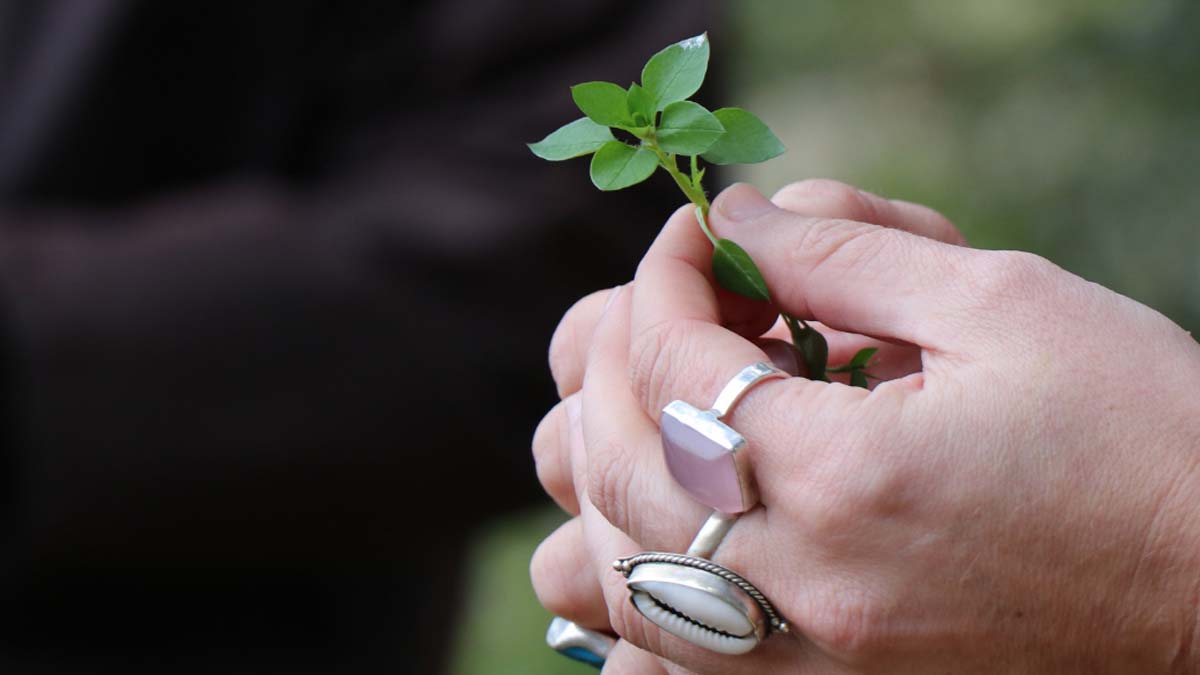In modern society, we live almost completely disconnected from the Earth, spending up to 90% of our time indoors. Isolation from nature’s vital life source has negatively impacted our health, causing an increase in mental health disorders, autoimmune diseases and chronic inflammation, among other ailments. As humans, we are a living microcosm of the Earth, containing all the same elements of the Earth and the universe. Therefore, we must go outside daily to realign and reconnect with the elements of nature within and without. One of the best ways to live interconnected with nature is by foraging.
You may be thinking – what is foraging?
Foraging is the gathering of wild food and medicine from one’s surroundings, also referred to as wild-crafting. Foraging includes the gathering of wild edible and medicinal plants. You don’t have to be a botanist, herbalist or plant scientist to get started foraging. All you need is a willingness to reconnect with nature. As a human, you have everything you need to forage wild herbs – your senses.
Plants already communicate to you through your senses. For example, bring to your mind’s eye the magnolia flower. How does it make you feel when you visualize the beautiful white flower?Can you recall the flower’s scent? Magnolia flowers provide innumerable human health benefits and help ease asthma, bronchitis, fainting spells, sinus pressure and mild depression. Although we may not be consciously aware, we love magnolia flowers for a reason beyond their aesthetic value.
Plants receive vital life force energy from the sun, water and soil and transform it into nourishing food for all of us. So when you forage plants with gratitude, you receive vital life force energy, raising your vitality. Also, wild plants contain hundreds of different plant phytochemicals that protect your body from chronic debilitative diseases such as cancer. Science has shown that wild plants have a higher content of plant phytochemicals than cultivated plants.
Unfortunately, some of our favorite vegetables have been bred to increase crop production at the expense of nutritional value. For example, the anticancer, DNA-repairing glucosinolates in cruciferous plants have been bred out because of their bitter and pungent flavor, which consumers dislike. However, the pungent and bitter taste removes stagnant energy in our bodies, clearing our system and removing disease.
By foraging, you ensure that you are still getting a wide variety of plant phytochemicals into your diet that will protect you from chronic diseases. Also, foraging wild food helps you live in season and ensures that you receive the plant phytochemicals your body needs at the right time.For instance, in the cold months before spring, winter annuals cover many “weedy” – herbicide-free – lawns across America. These winter annuals, such as chickweed and cleavers, contain an abundance of chlorophyll that our bodies need in the winter to keep the lymphatic system moving and healthy. They also contain other plant phytochemicals, such as saponins, which lower our risk of heart disease. If you have an herbicide-free lawn, you can easily learn the weedy winter annuals and diversify your diet.
Once you start foraging daily, it will change your life.
You will experience a positive shift in your physical and emotional body. You will begin to feel lighter, happier and more content. It is not surprising that living disconnected from nature and eating a finite selection of produce from the grocery store has left many of us feeling emotionally unstable and overall unwell.
The United Nations Food and Agricultural Organization estimated that 75% of the world’s food comes from 12 plants and five animal species. Unfortunately, most humans only eat 12 different plants when the human body is designed to eat hundreds. Yet, outside our doors exists a wide diversity of edible and medicinal plants.
I forage 50+ edible and medicinal plants within two miles of my doorstep in Charleston. I couldn’t imagine my life without foraging wild plants. I couldn’t imagine not witnessing the different edible plants by season. I couldn’t imagine not living interconnected with Mother Nature. I couldn’t imagine not being able to heal myself or my family with wild herbs.
If this article resonates with you, I recommend learning how to forage this year. Return to nature daily, pay attention to which plants attract you and learn their names and uses. Purchase a foraging book or two that covers your region.
Take a class. Check out Yahola Herbal School’s In Season Monthly Forage Membership Program at yaholaherbalschool.com/forage-monthly. I’d love to guide you into the healing world of edible and medicinal plants. Prioritize your health and the health of the Earth this year by learning how to forage your food and medicine.
By April Punsalan
